Member Login
E-mail: ISTM@ISTM.org
Office hours: Monday - Friday, 9.00 - 17.00 EDT (UTC-04)
January 2013

President's Message
From Fiona Genasi, ISTM President

ISTM Executive Board from left to right. Back row: Annelies Wilder-Smith, Alan Magill, David Shlim, David Freedman. Front row: Karin Leder, Diane Nickolson, Fiona Genasi, Lin Chen, Francesco Castelli
I cannot believe another year has passed! It was an incredibly busy one for the ISTM as we focussed our efforts on stimulating the practice of travel medicine around the world and fostering communication, engagement and inclusion of ISTM members with the Society. The ISTM Secretariat, Executive Board, Leadership Council, Standing Committees, Professional and Interest Groups, and of course, ISTM members, all played a critical role in helping realize this goal as the year progressed. I’d like to share with you a rapid “round-the world” tour of the key events of the past 12 months.
January started off well, with an ISTM membership of over 2700 representative of 82 different nations. The CISTM14 Site Selection Committee settled on the beautiful Quebec City, Canada.
February was very productive as the International Outreach Task Force met in Munich to discuss how to help grow ISTM representative of the global travel medicine community. One outcome of the Task Force was the introduction of two new membership categories: a Developing Country Associate Membership and a Retiree Membership. The ISTM Review Course was delivered very successfully in San Francisco to 130 participants from 11 countries.
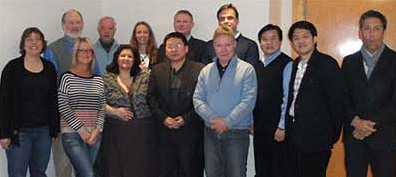
Task Force on International Outreach - Munich, Germany
March, the Pharmacist Professional Group participated in the 160th annual meeting of the American Pharmacists Association in New Orleans and the Dutch and Belgian members of the Local Organising Committee for CISTM13 got together in Maastricht to start planning the social and cultural programme for the meeting.
April, planning began on the programme for the CISTM13 when the Chairs of the Scientific Committee met in the Netherlands. More than 140 symposia and workshop proposals were reviewed. The 2012 Research Award winners were announced. A record number of 25 applications were submitted, and two awards, totaling more than USD 20,000, were granted to researchers in Germany and USA
May was another busy month which saw us holding our 5th Regional ISTM meeting in conjunction with the 9th Asia Pacific Travel Health Conference, in Singapore. More than 700 participants from over 65 countries attended and ISTM was able to offer the Certificate of Travel Health (CTH®). I joined Prativa Pandey and David Shlim (past and future ISTM presidents, respectively) as they hosted a one-day celebration of the 30th Anniversary of the CIWEC Clinic in Kathmandu, Nepal.
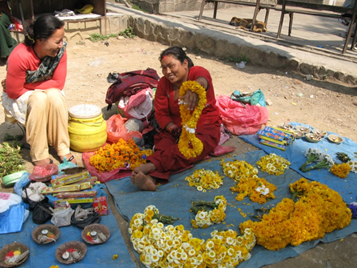
Kathmandu, Nepal
June heralded the Northern European Conference of Travel Medicine (NECTM) in Dublin during which ISTM partnered with 10 northern European Travel Medicine organizations, and in particular the Travel Medicine Society of Ireland who hosted a very successful meeting . Ireland also served as the site of the ISTM GeoSentinel® Site Director’s meeting for 2012, when 42 sites from around the world met to facilitate research on current trends in illness among travellers. The end of June saw a small group of ISTM officers convene in Atlanta at the Secretariat office to conduct final, face-to-face interviews with the short-listed candidates for the ISTM Secretary/Treasurer position.

Diane Nickolson and Colette Bowditch at NECTM - Dublin, Ireland
July’s highlight was the announcement of Peter Leggat from Australia as new Secretary/Treasurer of ISTM, to commence in May 2013. We were fortunate to have had a number of excellent candidates. The Selection Committee, chaired by Alan Magill, did a wonderful job in guiding the process through to a satisfactory conclusion.
August through October afforded us time to focus on several key initiatives, including the CTH® Renewal programme and development of our IT systems. But outreach activities continued during these months including participation in the South African Society of Travel Medicine convention in Johannesburg, and IDWeek in San Diego.
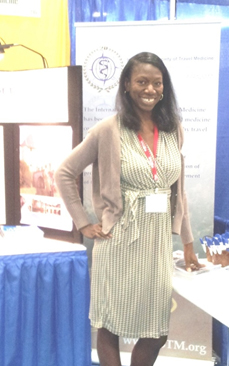
Daveen Capers from the ISTM Secretariat, at IDWeek - San Diego, California, USA
November, excitement is building for CISTM13! Registration and call for abstracts opened and the expanded scientific programme was posted. For the first time, a Charity Donations Initiative was launched alongside conference registration for donations to Nepal, Chad, Burma, Tanzania, Peru and Cambodia. ISTM intends to equally match the amount donated by CISTM13 delegates up to a maximum of USD 15,000.
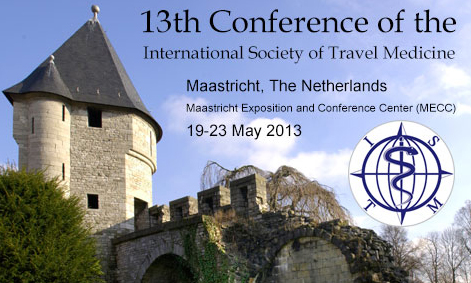
December arrived and ushered in Christopher Van Tilburg to the role of NewsShare Editor-in-Chief, taking over from Peter Leggat. The position has been enhanced to include member communications, including social networking possibilities and activities, and this edition of NewsShare will be his first at the helm. Welcome Christopher - and sorry this piece of mine is so long..!
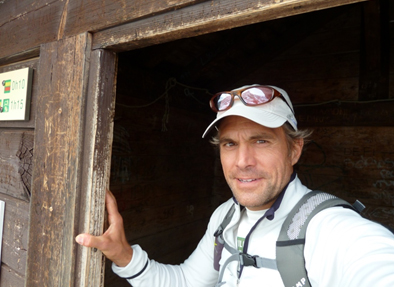
Christopher Van Tilburg takes over the helm as NewsShare and Communications Editor-in-Chief
In finishing I want to thank you for giving me the opportunity to serve as President of the Society. I can honestly say I am enjoying every challenge that comes my way and I truly feel part of a global family. I step aside during the CISTM13 in Maastricht, at which point David Shlim moves into the hot seat. David and I have been working closely together for the past two years and I am sure his transition will be smooth and he will make a wonderful President.
Finally, I'd like to take this opportunity to wish all ISTM members, wherever in the world you might be, a peaceful, healthy, happy and rewarding 2013. I am writing this on 25th January - the birthday of Rabbie Burns in 1759 - so think it appropriate to recall the sentiments of Auld Lang Syne, which encourages us to put the previous year behind us and look forward to the New Year ahead.
Cheers,
Fiona Genasi
From the Editor

Christopher Van Tilburg
I'm a minimalist at heart. While waiting for my flight, PDX-AMS-JRO, I realize my usual "weigh less, take less" methodology has a little wrinkle: Electronics. Since this is a work trip, I'm carrying more than my usual iPhone and notebook. I have a small projector to do lectures, a Kindle to make it easier to pack reading material, a small camera, and a solar charger. And it seems like the chargers and plugs are all different! Alas, gone are the days of charger-free travel and being able to browse airport bookstores, instead of trying to hunt for an outlet. So, enroute to Tanzania to teach travel and wilderness medicine, I am packing a slightly heavy carryon, my mountaineering gear stashed in a waterproof duffel in the belly of the plane. So, what does all this have to do with travel medicine? Well, times are changing and more so now it seems I need to keep up with electronic telecommunication while I'm traveling. And, travel medicine is changing too, especially with the widespread use of social media, online journal articles, and listserves.
I'm honored to follow the footsteps of my long-time friend Karl Neumann and my new one Peter Leggat. I look forward to putting together NewsShare each issue with the ISTM Sectetariat. There are a few things changing, to keep up with the times. In addition to the usual happenings about the Society, I'd like to give you a little information about travel medicine. In this issue, Nancy Pietroski has written a snippet of what you can find on TravelMed, the list serve. Down the road, we may be able to add member blogs and images from trips or unusual travel medicine cases.
A bit less formal than other means of communication like the Journal or the Expert Opinions, NewsShare is a great spot to get info on the happenings of the society. If anyone is interested in contributing, feel free to email me or track me down at Maastricht
Safe journeys,
Christopher Van Tilburg, MD
Editor, ISTM NewsShare
TravelTalk: Hot Topics from TravelMed
A new feature Travel Talk highlights recently discussed topics on TravelMed, the ISTM Listserv. To access the full discussions in the TravelMed archives, check the keywords below. The content and opinions above are neither pre-screened nor endorsed by the International Society of Travel Medicine who administer TravelMed Listserv; the content should neither be interpreted nor quoted as inherently accurate or authoritative. Travel Talk is authored by Nancy Pietroski, Pharm D, a clinical pharmacist from Telford, PA
The Topic: The utility of Phenergan (promethazine) in nausea due to AMS on a Kilimanjaro trek 5,895m (19,341 ft).
Key words: Mt. Kilimanjaro, Kili and meds, Phenergan
The Talk: Phenergan (promethazine) is used for the treatment of nausea and vomiting due to AMS (doses typically recommended are 12.5-25mg PO or 25mg pr q4-6h PRN). Most responding on the listserv felt like Zofran (odansetron), especially the orally dissolving tablet (4mg), works as well as or better than promethazine and has a better tolerability profile than the older drug. Side effects with promethazine (eg, drowsiness, blurred vision, dry mouth) are an important consideration in a wilderness setting, especially when self-evacuation is needed. The counterpoints to the use of odansetron are that there are those people with AMS-induced nausea and vomiting who do not respond to odansetron, even in doses up to 8 mg, that respond reliably to promethazine or Reglan (metoclopramide). It was suggested that ondansetron may work best in preventing nausea and vomiting, and not as well after the symptoms have started. Lower doses of promethazine (such as 6.25mg or 12.5mg) may be tried with success. Promethazine also may work more reliably in those travelers naive to antiemetics and in children.
Secretary-Treasurer's Report

David Freedman
2013 ISTM Presidential and Executive Board Elections
The 2013 ISTM Presidential and Executive Board Member elections are now underway. Each ISTM Member in good standing should have received an email containing a link to the independent balloting company that is managing the election. Voting will remain open until 15 March 2013, and each member may only vote one time for each of the positions listed on the ballot. If you have not received your email, please contact the ISTM Secretariat at ISTM@ISTM.org.
There are three positions up for election this year: the next ISTM President-Elect and two Counselors. The President-Elect will serve three two-year terms, as President-Elect, President then Past President and may never serve again as President. Each of the two Counselors elected will serve one four-year term and may not immediately run for an additional four-year term. The nomination and election processes are structured so as to ensure that the Executive Board of ISTM represents multiple parts of the world even though some regions have many more members than others. A nominating committee, in accordance with criteria set out in our bylaws, was formed by the ISTM Executive Board and selected these candidates and constructed the final ballot from the nominations received.
Ballot
For President-Elect: Christoph Hatz vs. Annelies Wilder-Smith
For Counsellor 1: Michelle Barry vs. David Hamer
For Counsellor 2: Poh Lian Lim vs. Marc Mendelson
ISTM 2013 Presidential and Executive Board Elections
Candidates for President Elect
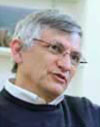
Christoph Hatz,
Switzerland
Christoph Hatz, Switzerland
Having served the ISTM in various functions with the strong support of many colleagues of the Society, I would like to take on the challenge to serve the Society in one more way to help steering this group of highly motivated members over the next years.
My first experience with the ISTM dates back to 1999 in my home country where the first International Congress on Travel Medicine took place in Zurich. Coming back from rural Africa for the occasion, I was invited to present our experience on malaria chemoprophylaxis among the expatriates living in my then host country Tanzania. Both commitments had a lasting effect on me. I attended all ISTM Conferences since 1993 and was always given the chance to present our experience and ideas. I also remained faithful to Tanzania, working at regular intervals for and with the staff at the Ifakara Health Institute and St Francis Referral Hospital in a rural district of this country.
Trained as a specialist in internal medicine at the University of Basel and various Swiss hospitals, my involvement in travel medicine for now 35 years at my home bases at the Swiss Tropical and Public Health Institute in Basel and at the Travel Clinic of the University of Zurich where I presently work with a shared position, has fascinated me throughout my career by its array of different topics that make this still relatively young discipline a source of inspiration and opportunities. Working with two motivated teams in Basel and Zurich, we are serving some 25'000 clients per year by giving them pre-travel advice. Zurich also hosts a WHO Collaborative Centre for Travel Medicine. Moreover, migrant issues have kept us busy at service, research and teaching levels over many years. All this work is reflected by teaching and training activities around the globe as well as by numerous publications, many of them in the Journal of Travel Medicine for which I was honoured to serve as contributor, member of the editorial board and as chair of the publication committee.
The CISTM meetings have been a main focus of my working with the Society. The work in the scientific committee for the Montreal conference and as a Counsellor provided excellent chances to further raise the awareness on migrant health issues. The call to cochair and chair the scientific committee of the last two CISTM meetings in Budapest and Boston was an incentive and pleasure to work with a committed team on scientific issues concerning all aspects of our discipline and to balance the interests of the respective topics, all by themselves a wide array of contents.
Goals for the ISTM over the next six years include:
- To maintain the leadership role in Travel Medicine as a dynamic Society with a high profile, and to keep the Journal of Travel Medicine as the number one publication in this discipline.
- To help promoting the expert combination of pre- and post-travel medicine services and research in our member institutions.
- To create opportunities for collaborative research at regional and international levels.
- To explore training offers for mutual learning in our member institutions.
- To promote and support the next generation of travel medicine specialists by helping them in gaining leadership experience in the Society.
- To foster networks in travel medicine around the globe for exchange in service support, teaching and training, and in research.
- To work on local, regional and international recommendations in travel medicine issues with the aim to gradually harmonise them for the benefit of the ISTM members and the beneficiaries, based on evidence-based and risk oriented research.
- To strengthen and expand the capacities of national and regional travel medicine societies in the existing and in the growing markets.
- To work on a balance of visiting and visited populations worldwide with mutual respect.
- To further explore migration medicine issues within the scope of the ISTM.
What travel or travel medicine experience had the biggest impact on your life?
As a medical student, I went to China with a group of young academics in 1974. The first trip outside Europe was a thrill in itself, but visiting China at that time was an incredible experience. Travelling with the Trans-Siberian Railway from Moscow to Harbin was a unique way to get to know the travel companions in a breath-taking environment. At the same time, the long journey gave the true sense of travelling at a slow pace, adapting our watch everyday to the local time. The arrival in China was quite something when a couple of hundred Chinese citizens were standing outside the Harbin train station curiously looking at us: most of them had probably never seen a ‘long-nose' before. The three weeks which followed were full of adventure and included unfamiliar social and political contacts with people of all levels of the population. Moreover, the first experience with the previously unknown Chinese medicine profoundly influenced my professional views.
The experience of this trip has widened my global horizon, and I am thankful to my parents and to the Chinese authorities who made this possible. I have never done such a ‘tourist' trip again in my life, partly because of the overwhelming impressions during this exceptional opportunity, partly because I was again privileged to visit many places as part of my professional life. No need to tell that my second visit to China in 2001 provided me with some stunning surprises.

Annelies Wilder-Smith
Singapore
Annelies Wilder-Smith, Singapore
Traveling and travel medicine is my passion. I feel extremely fortunate to have been able to combine both in my career. Through my own travels, I have often also become the ‘patient' - experiences which have deepened my commitment to enhance the subspecialty of travel medicine. My professional journey has led me to live and work for longer stretches in ‘destination' countries such as Nepal, Papua New Guinea, China and Singapore.
In 2000, I became the head of the Travellers Health and Vaccination Clinic in Singapore, an island-state that serves as one of the world's major air-hubs and has a true multi-national, multi-cultural environment. The 24,000 patient visits per year provided insight into day-to- day clinical issues and as well opportunities for identifying the knowledge gaps we all face in travel medicine. Emerging infectious diseases and their relationship with travel have become particular research interests to me ever since I was fortunately situated to be able to conduct several investigations on meningococcal disease during the Hajj and then during the SARS outbreak in Singapore. More recently, my research has focused on another emerging problem in international travelers: dengue. Dengue research projects have included a trial of the chimeric dengue vaccine in Singapore. Leading a multi-project EU dengue research grant that partners with collaborators from around the world has allowed inclusion of work projects with ISTM colleagues interested in travelers' dengue; these relationships are a result of being part of the community that ISTM fosters. As Site Director then Special Advisor to ISTM's GeoSentinel® Surveillance network, appreciation of the perspectives, needs and priorities of ISTMs flagship research initiative has developed.
ISTM's Journal of Travel Medicine (JTM) provides credibility to our discipline and it is important for our members and leaders to support the JTM; this is a priority for me and I have published 26 of my scientific articles there. Since 2006, I have served as co-editor of the annual revisions of WHO's "International Travel and Health" (the "Green Book"). Time as consultant to the International Health Regulations secretariat at WHO and member of the WHO Working Group on yellow fever risk assessment has slowly but surely facilitated more meaningful collaborations between WHO and ISTM. Another WHO/ISTM consultation meeting is planned in Maastricht.
Best lessons are always learned from personal stories in life and in science. Several years ago, I co-edited a book "Travel Medicine: Tales Behind the Science". This book provides insights into many of the behind-the-scenes events in travel medicine, personal stories of failures and successes contributed by well-known travel medicine practitioners and investigators, and the 'real life' tales that unravel the science behind travel medicine.
The bulk of the worlds' travel-related illness now occurs in Asia due to the rapid growth in travel volume in that region. As 2010-12 President of the Asia Pacific Society of Travel Medicine (APTHS), development of educational tools and research priorities for travel related issues in Asia is an experience and perspective I would like to bring to the wider ISTM audience while remaining entirely committed to ISTMs traditional spheres. A 4-year term as an ISTM Counsellor (2009-13), chairing the conference of APTHS in 2012, and serving on the JTM Editorial Board has brought many friendships over the past decade with those from all ISTM constituencies.
The ISTM meetings have always been a highlight in my life. No other forum offers such a congenial atmosphere for the friendships and personal networking that bridge us over each 2-year period. In many ways, ISTM has become family to me, and I want to see it flourish, evolve and grow.
Should I be elected as your President, my goals for the ISTM over the next six years are:
- To continue to grow the society through professional administration in our office and enhance the visibility and influence of the society internationally
- To foster high standards of research in travel medicine, combined with growth and mentorship of newer colleagues in the field. I have always been an advocate of the value of research that has an impact on clinical practice and policies
- To support existing Professional (nursing and pharmacists) and Interest Groups and help kick-start novel groups, thus ensuring more grass-root level involvement of a larger member
- To raise the clinical and academic standards of travel medicine through continued emphasis and efforts on the ISTM meeting as a priority. At the same time, ISTM meetings should remain appealing to the novice in travel medicine and to a wide range of professions
- To move forward efforts at harmonization and standardization of pre-travel advice and recommendations. Globally, this is a challenge that we need to tackle together, in particular in supporting younger national/regional travel medicine societies and national authorities in Asia, Africa and South America
What travel or travel medicine experience had the biggest impact on your life?
The SARS outbreak in Singapore clearly had a major impact on my life - personally and professionally. Maybe the following excerpts from emails that I wrote to some of my ISTM friends and colleagues during the crisis can give a bit of a glimpse of what I thought and felt at the time:
"The hospital is empty. My clinic was also shut. We have tents set up to do the screening of the suspected SARS patients in Singapore. All schools were closed. Yesterday they started screening at the airport. By definition, I am not allowed to fly anymore, as I have been in contact with SARS patients.
Morale in the hospital is low. So is mine. It frightens me to see my colleagues go sick. It really saddened me to see the pastor die. His only "mistake" was that he prayed for the index case (the young woman who imported SARS to Singapore from a short visit to Hong Kong, and has subsequently infected more than 20 people). He only spent 20 minutes with her. He ended up in ICU, and died 10 days later, leaving a young wife and two young children behind. At his funeral hardly anyone dared to show up, and those who did, came with face masks. The father of the index case also died, as did the mother. The grandmother is still seriously ill. The index case survived it all - I dare not guess what is going on in her mind.
People have started to ostracize me. My children are not invited to parties anymore. Some tell me not to go home until the outbreak isover. I now keep quiet about the fact that I work for the ‘SARS hospital'.." SARS created international anxiety because of its novelty, its ease of transmission, and the speed of its spread through jet travel. SARS and travel were intricately interlinked. Travelers belonged to those primarily affected in the early stages of the outbreak, travelers became vectors of the disease, and finally, travel and tourism themselves became the victims.
SARS arrived suddenly, and then disappeared after a global wave of deaths and fear. It taught me what far-reaching implications a travel-related disease could have. Indeed, the role that travel medicine needs to play in prevention, detection and mitigation cannot be overemphasized. And ISTM is there to bring visibility, expertise and a network of travel medicine specialists to enhance exactly that role.
Candidates for Counsellor 1

Michele Barry
United States of America
Michele Barry, United States of America
Michele Barry, MD, FACP is the Director of the Center for Innovation in Global Health and the Senior Associate Dean for Global Health at Stanford University. She is Professor in Medicine and by courtesy in the Graduate School of Business. As one of the co-founders of the Yale/Stanford Johnson and Johnson Global Health Scholar Award program, she has sent over 1000 physicians overseas to underserved areas to help strengthen health infrastructure in low resource settings. As a past President of the American Society of Tropical Medicine and Hygiene, she led an educational initiative in tropical medicine and travelers health which culminated in diploma courses in tropical medicine and travelers health both in the U.S. and overseas, as well as the first U.S. certificate exam. She has been a member of ISTM since its founding and has chaired the Professional Education Committee where she helped initiate Expert Opinion and the annual review course for the ISTM examination.
Dr. Barry is an elected member of the Institute of Medicine and National Academy of Sciences since 2002 and was the first Chair of the Interest Group on Global Health, Infectious Diseases and Microbiology at the IOM. She has been selected for Best Doctors in America and currently sits on the Board of Directors of the Consortium of Universities involved in Global Health (CUGH) and the Foundation for Advancement of International Medical Education and Research (FAIMER). She is the 2010 recipient of the Ben Kean Medal for excellence in teaching tropical diseases given every three years by the ASTMH. Her areas of scholarly interest include global health workforce, clinical tropical medicine, emerging infectious diseases, ethical aspects of transcultural training programs, and globalization's impact upon health in the developing world.
What travel or travel medicine experience had the biggest impact on your life?
My first foray into travel medicine occurred more than 25 years ago when I was a young visiting professor on sabbatical to the University of Zimbabwe - traveling with my then 14 month and 4 year old daughters for the year abroad. At that time there was very little in the literature about traveling with infants and young children. Even though I was trained as a clinical tropical disease internist and not as a pediatrician or yet in travel medicine, I delved into the literature and fastidiously reviewed all the material possible - mostly for peace of mind. The results, to my surprise, were able to be published in a well-received and cited publication - albeit truly the work of a harried mother worried about the health of her children. Full disclosure - traveling with my kids has remained a passion (even though they are now both adults) and I remain persistently connected to the study of traveler's health.
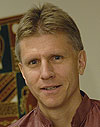
David Hamer
United States of America
David Hamer, United States of America
David Hamer has been actively engaged in the field of travel medicine since the early eighties as a traveler and since 1992 as a practitioner. From 1992 to 2004, Dr. Hamer was the Director of the Traveler's Health Service at Tufts Medical Center in Boston, MA, USA and, shortly after moving to Boston University, he became Director of the Travel Clinic at Boston Medical Center. He currently holds academic positions as Professor of International Health and Medicine at the Boston University Schools of Public Health and Medicine and Adjunct Professor of Nutrition at the Tufts University Friedman School of Nutrition Science and Policy. Dr. Hamer is a board-certified infectious diseases specialist with a long-term interest in tropical infectious diseases and 20+ years of field research experience in malaria, maternal health, neonatal and child survival. During the last two decades, he has designed and conducted numerous clinical trials that evaluated the epidemiology of and interventions for improving the health of travelers, treatment and prevention of malaria, HIV/AIDS, micronutrient deficiencies, neonatal survival, diarrheal disease, and pneumonia. He currently is on temporary leave from his clinical work at Boston Medical Center and is working as the Director of Research and Evaluation at the Zambia Center for Applied Health Research and Development in Lusaka, Zambia.
A member of ISTM since 1992, Dr. Hamer has attended every biennial CISTM since Acapulco in 1995 and has served on the CISTM 10 Scientific Program Committee and as Chair of the Local Organizing Committee for CISTM 12 in Boston. He has provided extensive service to ISTM. Dr. Hamer is currently the Chair of the Research and Awards Committee and a long-standing member of the Examination Committee. He has served in the past on the Finance, Membership, and Professional Affairs Committees. Dr. Hamer is a member of the editorial board of the Journal of Travel Medicine and has numerous publications in this and other journals on travel medicine topics. In addition, he holds the CTH® and CTropMed® certificates of ISTM and the American Society of Tropical Medicine and Hygiene (ASTMH). Complementing his work with ISTM, he is an active ASTMH member, having recently completed a year as President of the Clinical Group.
As a result of having been an ISTM member for two decades, having worked on several different committees with ISTM, and assisted with the local organization of CISTM 12, Dr. Hamer has developed a detailed understanding of many aspects of how ISTM operates and some of the challenges that it faces such as expanding membership, addressing the needs of different professional interest groups, maintaining a balance and good relations between Asian, European, and North American members, and operating without incurring financial deficits. As the field of travel medicine continues to expand and to be recognized as an important sub-specialty, the ISTM has an opportunity to play a central role in travel medicine education, accreditation, research, and policy advocacy. During the last decade, Dr. Hamer was participated in the growth and transformation of ASTMH into a larger, more vibrant organization that is trying to address each of these areas as it matures. His experiences with the ASTMH Clinical Group, ASTMH Council, scientific conferences, and various subcommittees will provide valuable lessons for ISTM as it continues to mature as an international society. In addition to continuing to strengthen the quality and increase the size of the travel medicine research awards, there are several other specific things that Dr. Hamer would like to accomplish if elected to serve as an ISTM Counselor. These include continued expansion of membership with a special focus on encouraging new members from resource-limited countries (which represent a potential growth market for the field of travel medicine as countries progress from low to low-middle income), motivating active practitioners to undergo the process of recertification in travel medicine, and strengthening the Society's educational efforts (CISTM, review courses, and on-line educational activities).
What travel or travel medicine experience had the biggest impact on your life?
Summer of 1984: Dhaka, Bangladesh. Following the advice of a close Bangladeshi friend from my undergraduate years at Amherst College, I arranged to spend the summer between my first and second year of medical school in Dhaka, Bangladesh. Arriving shortly before Eid al-Fitr, the Feast of Breaking the Fast at the end of Ramadan, I was immediately exposed to a new religion and culture. Having to wade to work at the International Centre for Diarrheal Disease Research, Bangladesh (ICDDR, B), I experienced the challenges the annual monsoon presented to the poor urban population of Dhaka with its limited, heavily strained infrastructure. As a relatively inexperienced traveler, I experienced first-hand the discomfort caused by traveler's diarrhea and I made the mistake of eating food that had been sitting in the hot sun for hours and within hours developed severe vomiting from a toxin-mediated food poisoning.
Seeing patients with severe dehydration from cholera, bloody diarrhea from shigellosis, and typhoid fever generated a life-long interest in enteric infections. Perhaps the most memorable aspects of my summer in Dhaka were some of the infectious diseases and manifestations of malnutrition that I witnessed. Kwashiorkor, marasmus, goiters due to iodine deficiency, and complete blindness from untreated vitamin A deficiency were common as were patients suffering terribly and dying from two vaccine-preventable diseases-- diphtheria and tetanus.
This brief but intense exposure to a broad range of preventable and treatable infectious diseases and micronutrient deficiencies had a profound impact on my future career as an infectious diseases specialist and resulted in a desire to better understand the interactions between nutrition and infection. The opportunity to learn about, rapidly adapt to, and respect a new culture and religion triggered a longterm interest in understanding how and why people behave as they do in different parts of the world. A better understanding of the epidemiology and risks associated with travel to a resource-poor country like Bangladesh has helped me to provide practical advice to travelers over the last two decades.
Candidates for Counsellor 2

Poh Lian Lim
Singapore
Poh Lian Lim, Singapore
Current work
I have been working as an infectious disease and travel medicine doctor in Singapore for 10 years. In 2005, our site joined the GeoSentinel® network and I serve as the Singapore Site Director and data contact. I have headed the Travelers' Health & Vaccination Clinic (THVC) since 2006, and recently became Head of the Department of Infectious Diseases at Tan Tock Seng Hospital (TTSH).
Travel impact
The travel medicine experience which made the biggest impact on me was spending 2-3 months in Zimbabwe in 1991, on a 4th year medical student elective. We worked in a rural mission hospital serving a district of 90,000. The enormous medical needs but also the warmth and generosity of the people we served made a deep impression on me. That time in Africa cemented my commitment to public health in developing countries and led to my eventual return to Asia to work with HIV patients.
My story
I grew up in Malaysia and left at age 18 to study biochemistry at Harvard, where I cleaned toilets, washed dishes and worked as a security guard to pay for my education (although at 5 feet 3 inches, I can't have been too intimidating!)
In addition to medical training in New York, Boston and New Orleans, I worked for 2 years at South Cove, an immigrant and refugee health centre in Boston, and part-time in private practice in Seattle for 3 years when my kids were younger.
I was plunged into SARS right after we arrived in Singapore, and have since been active in outbreak work with the WHO GOARN network, as well as HIV clinical trials.
My vision for ISTM
ISTM represents all of us who work in travel medicine, and should lead training, education, research and advocacy for travel medicine worldwide. Travel medicine is changing, and increasingly, the perspective of destination countries and the emerging economies of Asia, Latin America and Africa should make a difference to travel medicine practice and guidelines.
I hope to bring a balanced perspective and a deep love of travel medicine to my work serving as an ISTM board member.

Marc Mendelson
South Africa
Marc Mendelson, South Africa
Principal Specialist and Head. Division of Infectious Diseases and HIV Medicine, University of Cape Town (UCT). Associate Professor, Department of Medicine, UCT.
Training
St Mary's Hospital, London; Addenbrooke's Hospital, Cambridge; The Rockefeller University, New York.
Leadership
President of the Federation of Infectious Diseases Societies of Southern Africa (FIDSSA). Co-chair of the South African Antibiotic Stewardship Programme and a member of the World Health Organization Influenza Advisory Group. Associate Editor for Journal of Travel Medicine, the International Journal of Tuberculosis and Lung Disease, and the Southern African Journal of Epidemiology and Infection. Conference Chair of Options for Control of Influenza (2013), and the 16th International Conference on Infectious Diseases (ICID) in 2014, both taking place in Cape Town.
Travel Medicine
Director of the Cape Town GeoSentinel® Travel Surveillance Site, and Head of the GeoSentinel® Publications Committee. Area of expertise in Travel Medicine is the returning traveler. Published author on health risks to travelers to South Africa prior to the 2010 FIFA World Cup and a forthcoming GeoSentinel® analysis of regional variation of travel-related diseases in Africa. CISTM presentations on schistosomiasis, travel to South Africa, and an upcoming workshop on HIV and the traveler.
Research
Major focus on Tuberculosis, HIV, Travel Medicine and Neglected Tropical Diseases. 50 publications in peer-reviewed journals and 11 chapters in books including those on Travel Medicine.
Outside interests
I count myself incredibly lucky to live in one of the most beautiful places in the world with my wife and 3 children. I am a keen mountain biker, involved in multi-day stage races, and am a closet opera singer with a fondness for Wagner. Unsurprisingly, I have a passion for traveling, both in Southern Africa and further afield, and am an enthusiastic scuba diver, despite becoming ever more buoyant.
What travel or travel medicine experience had the biggest impact on your life?
The travel experience that had the greatest impact on my life was my medical elective to the Solomon Islands in 1988. It was here that I developed my passion for infectious diseases. A hot bed of drug-resistant falciparum malaria, leprosy and other tropical-related infections, practice in the Solomons was like seeing a textbook come to life. Performing clinics in remote villages accessible only by boat and seeing the way that life was lived and medicine practiced was the perfect contrast to the realm of academic medicine in which I had trained, and planted the seeds of desire to work in the developing world. Here, I also learned about Diving Medicine, surrounded by incredible coral reefs and countless wrecks from the Guadalcanal US-Japanese conflict of WWII. Finally, it was here that I was first confronted with the realities of travel medicine from a traveler's perspective. Planning the trip, being vaccinated, having to take antimalarials for 3 months, contracting giardia, dermatophyte infections and even a sizeable haematoma having being taken for a shark by an over-enthusiastic Remora (suckerfish). These experiences helped give me a healthy perspective, empathy for and understanding of, what people face to protect their health during travel.
Vision for ISTM
Over the past 21 years, ISTM has developed into a coherent, authoritative, representative body for Travel Medicine. Although my key role as a counselor would be to support the ongoing priorities and programmes of the ISTM, there are 2 focus areas that I would develop in the medium term. ISTM has never had a counselor, secretary-treasurer or president from Africa, and only 4 representatives from developing countries as a whole. It is vital that ISTM incorporates strong leaders from developing countries to help grow practice in neglected areas, which will increase understanding of travel-related epidemiology to inform health risk, increase provider clinics for persons during travel, and critically, support development of travel medicine practitioners in resource-limited settings. Much of Asia and South America share Africa's needs, and there will be many common problems and approaches that can be adopted. Hence, my first focus point for development would be to build on resources that are already in place and coordinate, support and develop new initiatives to outreach and support to neglected areas, with an emphasis on developing countries.
My second focus area would be clinical practice and research. In GeoSentinel®, ISTM has a successful collaborative research surveillance network, which has advanced knowledge and clinical practice through research and publication. What is missing is a coordinated response to more practical, clinical questions, which could be answered by a similar collaborative approach and multicenter studies. In addition, there is a need to mentor young travel health practitioners to teach and develop their clinical research questions so as to grow the discipline of clinical research within travel medicine. I would aim to help build on ISTM's current research initiatives to provide a team of mentors and give research method training a higher profile at CISTM and within other Society activities. I have enjoyed the varied leadership roles I currently have, developing services and collaborating to make difficult decisions. I believe that I would be suited to the role of ISTM counselor and could contribute to the growth of ISTM in a positive way.
News from the Secretariat

Diane Nickolson
It has been a busy time at the Secretariat, with the processing of membership renewals, planning for the CISTM13, the CTH examination, and the North American Course as well as keeping other programs and activities moving forward.
As you renew your membership for 2013, please be sure to consider joining one or more of our interest and professional groups. There is no additional fee to join, and the groups are becoming very active in the society representing their respective interests. They are planning now for special activities during the upcoming CISTM in Maastricht, and you'll want to be a part of it. You can find information on the activities of each group on their website pages:
- Destination Communities Support Interest Group
- Migrant and Refugee Health Interest Group
- Nursing Professional Group
- Pediatric Interest Group
- Pharmacist Professional Group
- Psychological Health of Travellers Interest Group
We are pleased to report that almost three quarters of you have already renewed your membership for 2013, and hope we can have everyone renewed prior to the March cut-off. If you've already renewed, and didn't join one of these groups, it's not too late - you can go back into your account and join at any time.
We are delighted to also report that we have had a remarkable number of new members already join for 2013 - more than 200 travel medicine professionals are first-time members so far in 2013, which is almost double of where we were in 2012 at this time. We welcome each of the new members, and look forward to serving all of our members for years to come.
As I'm reviewing the membership statistics, it is wonderful to see some of you taking advantage of our new membership categories the Executive Board approved for 2013. We may now boast of a reduced rate for retirees, as well as a special discount on full membership with all of the benefits for those residing in resource-poor countries.
As we move into 2013, we wish for all of you a year in the midst of your loved ones, enjoying good health and lots of laughter. Thank you for all that you do for the ISTM and the travel medicine community.
13th Conference of the International Society of Travel Medicine (CISTM13)
19-23 May in Maastricht, The Netherlands
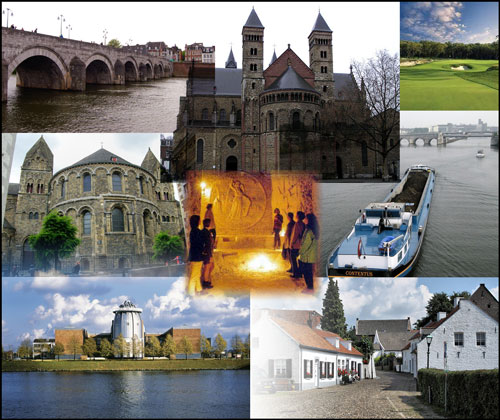

Mary Wilson
Scientific Program Chair
Beautiful and historic Maastricht will be the backdrop for the CISTM13. A superb scientific program is being planned, with many international leaders in travel medicine around the globe. The scientific program, as well as registration, hotel and venue information can be located on the CISTM13 web page.
As one of the oldest cities in the Netherlands, and the location of the signing of the treaty launching the Euro, Maastricht boasts a variety of sights that should not be missed.
- The Caves of St. Pieter, a labyrinth with over 20,000 tunnels where marl was mined for centuries.
- The Casemates of Maastricht, a network of underground passageways created between 1575 and 1825.
- The white village of Thorn, once a miniature principality led by an abbes and a convent of twenty noble ladies and now a historical site with cobbled streets and the beautiful Abbey Church.
- The Basilica of St. Servatius (Basiliek van St. Servaas), located on the famous Vrijthof Square, is a Romanesque basilica with crypts and treasures. The Basilica of Our Lady (Onze-Lieve-Vrouwebasiliek) dates back to the 11th century and includes a miraculous statue of Our Lady, Star of the Sea.
- Take a romantic cruise down the Meuse River.
- Visit the Bonnefantenmuseum Maastricht, known for its unique mixture of art from different periods, the museum houses an impressive collection of art objects dating from 1200 to 1600, as well as contemporary art.
- The 18 hole 'Het Rijk van Margraten' Golf Course.
- Don't miss the Sint-Servaasbrug (St. Servatius Bridge) - a beautiful 13th century stone bridge over the Meuse.
Regular registration for the CISTM13 ends 31 March 2013.
Be sure to register early and book your hotel rooms, as hotel space is limited.
2013 Travel Medicine Update and Review Course

The 2013 Travel Medicine Update and Review Course will be held this year in Toronto, Canada over the weekend of 8-10 March. Using a combination of lectures, interactive sessions and mock tests, the expert faculty will present a curriculum covering topics relevant to physicians, nurses, pharmacists and other health care professionals who provide medical care and advice to travelers, expatriates and migrants. An outstanding faculty and course content have been scheduled. Topics for the 2013 Course, as well as venues, location and registration, can be found on the ISTM website.
Registration for the 2013 CTH® Examination is now open!

Kenneth Dardick
Exam Committee Chair
The 2013 Certificate of Travel Health® Examination will be held on Sunday, 19 May 2013, just prior to the opening of the CISTM13 in Maastricht, The Netherlands. Registration is open to all qualified professionals who provide travel health-related services. Travel medicine practitioners who obtain the ISTM Certificate of Knowledge (CTH®) can benefit from:
- international recognition of your expertise and commitment to the field of travel health;
- continued professional development;
- enhanced professional credibility;
- increased patient referrals; and
- tools for promoting your travel clinic.
Complete registration information, as well as information on how to prepare for the Exam, can be found on the Certificate in Travel HealthTM web page.
To take the examination, complete applications must be filed electronically by 1 April 2013.
ISTM Research and Travel Awards Committee

David Hamer, Chair
Seventeen research proposals have been submitted for review by the Research and Awards Committee. The review should be completed by February. There appear to have been many excellent and interesting proposals submitted that we hope will eventually generate new evidence to improve the practice of travel medicine. The winner of the awards will be announced during the ISTM Membership Assembly at the CISTM13 in Maastricht, 28-30 May 2013.
Continuing Professional Development (CPD) Committee

Phyllis Kozarsky, Chair
As with most healthcare disciplines, the practice of travel medicine is a changing and evolving field. In recognition of the critical need for travel medicine practitioners to maintain and increase their skills and knowledge, the ISTM has developed a continuing professional development program. The program is a 10-year cycle of professional education, study and involvement including passing an examination, educational programs , writing, editing and reviewing publications, teaching, research, clinical work and other professional development The first step of this process is passing the CTH® examination. Beginning with the CTH® Certificates awarded in 2011, there is a mandatory maintenance process every ten (10) years to keep the certificate active. There are two avenues for maintaining an active CTH® - either accruing a specific number of credits through the professional development activities or retaking and passing the CTH® examination. Since the program became effective in 2011, travel medicine professionals who were awarded certificates prior to 2011 are encouraged to participate voluntarily.
Detailed information can be found at www.ISTM.org. The ISTM has released this information to all ISTM Members and current CTH® holders in this draft format. The ISTM is allowing for a comment period to provide ample opportunities for the community to review the plan and submit comments, questions and concerns to the ISTM Secretariat at ISTM@ISTM.org. The Call for Comment period was open for 90 days, and ends on 11 February 2013. Please send your thoughts on the program by 11 February 2013 to the ISTM Secretariat at ISTM@ISTM.org.
Nursing Professional Group (NPG)

Gail Rosselot
Happy New Year to the nurses of ISTM! It will be an exciting year for our professional group and we welcome your ideas and feedback as always. Please be sure to check our website page at www.istm.org to see minutes of our meetings and current activities of the Council. Let us hear from you by writing to Gail Rosselot, Chair at garosselot@aol.com or Lani Ramsey, Vice Chair at ramseylani@hotmail.com
Revisions to the NPG Charter
By now all of you have received an email with our proposed changes to the NPG Charter. As you know, we have suggested moving the election cycle to the September following a CISTM, increasing the size of the NPG Council by two to nine members, and redefining the regional make-up of the Council. All the comments we received during the 45 day comment period were fully supportive of these changes. Our proposal has now gone to the ISTM Executive Board for their review and requested acceptance.
Maastricht Nurse's Reception and NPG Assembly
The NPG Council is hard at work planning for two special nursing events at CISTM13. In the hour before the Opening Ceremony in Maastricht, nurses are invited to participate in the traditional Nurses' Reception. This is a wonderful tradition at ISTM meetings when international colleagues reconnect and first time conference attendees learn about session content and meet new friends. Please be sure to join us.
Later in that week we will have our NPG Assembly when all members have the opportunity to share ideas and suggest initiatives for our professional group for 2013-2015. Members of the Council will recap projects since Boston and ask for feedback on some proposed new directions, including a mentoring program and a research collaboration project. At this meeting we will also discuss changes to the NPG charter, solicit volunteers for the various ISTM committees, and encourage nominations for the 2013 NPG Council elections. A very important meeting-not to be missed!
NPG Responds to the Proposed CPD Scheme
The NPG Council is in the process of finalizing its review of the proposed plan for Continuous Professional Development for holders of the CTH credential. We will soon circulate our recommendations for changes to this proposed point system. We encourage all ISTM nurses to read the CPD plan (at www.istm.org), review our Council comments, and then share your own thoughts. CPD is a very important new initiative on the part of ISTM and this plan may be in effect for the next ten years. Don't miss out on your opportunity to give comments.
Register for Maastricht. See you then!
Pharmacist Professional Group (PPG)
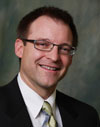
Jeff Goad
International Pharmaceutical Federation (FIP) World Centennial Congress of Pharmacy and Pharmaceutical Sciences, Amsterdam
Submitted by Claudine Leuthold

Claudine Leuthold
The FIP Congress is the leading international event offering diverse learning opportunities for those active within all areas of pharmacy since 100 year. The anniversary Congress was hosted in Amsterdam, The Netherlands -home country of FIP- in October 2012.
Over 5000 participants from more than 100 countries attended. The 6-days conference featured plenary sessions, workshops, short oral presentations, case studies and section meetings for the 11 different sections.
The topics ranged from medicines and the healthcare team of the future, ensuring the safe and responsible use of medicines, the future medicines supply chain and how best to contribute to the healthcare economy of the future.
The Community Pharmacy section (about 25,000 members) proposed more than 30 topics covering different parts of the challenges encountered by the profession. Many topics explored pharmacy education reform, improvement of patient outcomes through collaborative practice, pharmacovigilance, medication information for consumers, use of social networks, and drug shortages.
The Community Pharmacy section (about 25,000 members) proposed more than 30 topics covering different parts of the challenges encountered by the profession. Many topics explored pharmacy education reform, improvement of patient outcomes through collaborative practice, pharmacovigilance, medication information for consumers, use of social networks, and drug shortages.
In addition, Claudine Leuthold from the ISTM Pharmacist Professional Group, met with contacts from FIP Bureau and the main Pharmacists Association in the Netherland, the "Koninklijke Nederlandse Maatschappij Pharmacie - KNMP (Royal Dutch Pharmaceutical Company). ISTM brochures were distributed at FIP and KNMP booths. More collaboration is expected as the next ICTM will take place in Maastricht, The Netherland.
Destination Communities Support Interest Group (DCSIG)

Irmgard Bauer
ISTM Destination Community Support Interest Group (DCSIG) Call for Nominations
Are you interested in serving as an Officer of the ISTM DCSIG? If so, you have until 31 January 2013 to complete a proposal form to be considered for inclusion on the ballot. You may find the form on the home page of the DCSIG in the ISTM website at www.ISTM.org.
The DCSIG is governed by a Steering Council elected by its membership. The Steering Council consists of 6 members, one of which will be Chair, one Vice-Chair, the Immediate Past Chair and three Council Members. It is anticipated that subcommittees will be formed from within the group members, and the elected council may appoint cooperating members. The Group Chair will report to the ISTM Executive Board and serve on the ISTM Leadership Council.
The steering council members must represent different world regions and at a minimum three continents must be represented. A minimum of 2 seats in the Council will be reserved for ISTM members from Africa, Asia or Latin America. Interest Group membership may be multi-disciplinary. Interest Group members must be full ISTM Members. Potential council members are required to present their CV and a written vision statement. This application need not be proposed and seconded and can be self- declared on advertisement of the open position. Members and Officers serve terms of two years, with a limit of two terms in succession. Approximately one third of members are elected every two years to allow for continuity.
Consider running and become a leader of this important Interest Group. For the Nominating Form, please go to www.ISTM.org.
CISTM13 Pre-Conference Symposium Planned
We are presenting a pre-conference symposium at the CISTM13 in Maastricht in May 2013 titled:
Responsible Travel: A Travel Health Concern? A Presentation of the DCSIG
What are your experiences or thoughts in the areas of cultural awareness, exploitation of host communities and the impact of violent assault on travellers and their families? We think it is time to move travel health care into broader dimensions. An innovative style of symposium will take you well beyond diarrhoea and diagnoses. Three presentations will set the scene - followed by your opinions, questions or views. Join the Destination Communities Special Interest Group for some education, debate and dialog.
